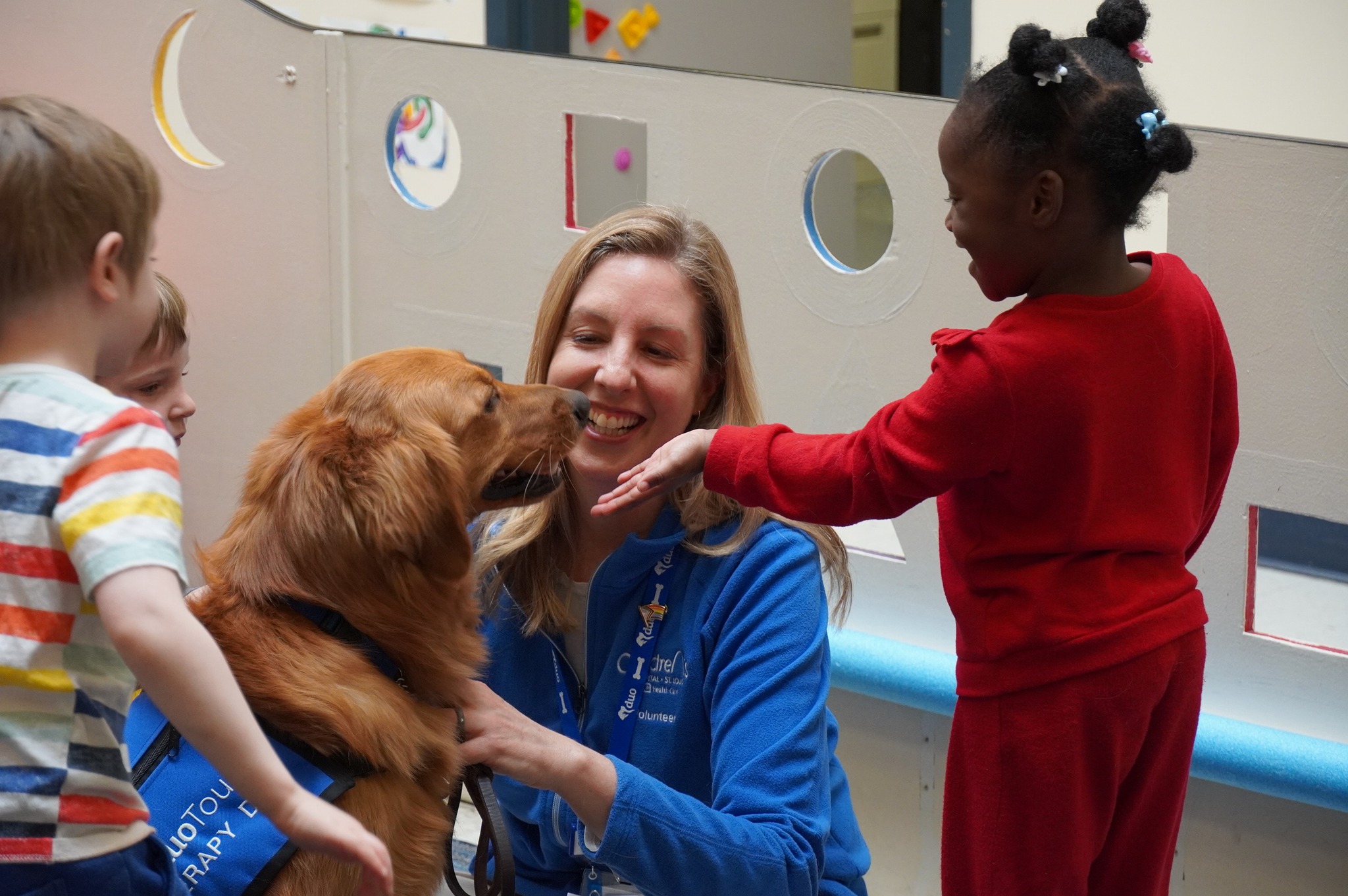The healing power of animals: How therapy dogs help patients at St. Louis Children’s Hospital
Imagine you’re 7 and you’ve just been admitted to the hospital. Aside from any unknowns related to your condition, there’s a certain uneasiness that comes with being in an unfamiliar environment, especially one as foreign as a hospital — new faces, antiseptic smells, beeps and bells from monitors. On top of it, you’re scared and not feeling well. Then, you hear a sound you recognize: Four paws trotting down the hall. A friendly furry face pokes its wet nose into your hospital room. A Duo touch therapy dog is here to visit you.
When children are hospitalized, therapy animals can be a healthy distraction, not only for patients but also for their families. Even outside of the hospital walls, owning a pet can positively impact both physical and mental health:
Pets provide kids with responsibility and help them become accustomed to routine. The kids can feed their pets, supply them with water, wash them and take them for walks.
Pets can help boost our immune systems by exposing us to different types of bacteria. This can be especially beneficial for children, who are still developing their immune systems.
Interacting with pets can lower stress levels, decrease anxiety and improve mood.
For adults, dog owners tend to have lower blood pressure and cholesterol levels, which reduces their risk of heart attacks and strokes.
Therapy dogs are an integral part of the culture and the experience at St. Louis Children’s Hospital, says Valerie Lamping, the volunteer services coordinator who heads the hospital’s pet therapy program, Purina Paws for Hope. Made possible thanks to donations from Purina, this program at Children’s allows for dogs to visit the main hospital, as well as help patients at the two Children’s Specialty Care Centers in West and South St. Louis County. Additionally, the Purina Family Pet Center at St. Louis Children’s offers a designated room within the hospital where patients can receive special visits from their dogs or cats from home, as part of the healing process.

“We have enough therapy dogs to reach most people who come through the door,” Lamping says. “When children come here for outpatient appointments or a stay, they’re excited to know this is where they see the dogs.” Every child receives trading cards featuring the dogs’ photos, stats and a fun fact. The kids love the trading cards and like to collect them. Lamping says they serve as mementos they can take home to remember their experience positively.
Last year, the Purina Paws for Hope program had 101,750 interactions with patients, families, visitors and staff. Visits with the therapy dogs can range anywhere from 30 seconds to 30 minutes, and Lamping says they’re especially good for patients who have mobility issues or disabilities that prevent them from interacting with others. “Some of our dogs are very gentle and still,” Lamping says. “They’re calm with all our patients.”
Three or four therapy dogs go around the hospital on any given day, except in operating rooms, sterile environments, medication rooms and the bone marrow transplant unit. Due to the broad spectrum of care offered at the St. Louis Children’s and Washington University Heart Center, patients might be admitted anywhere from 24 hours to nearly a full year. Jana Vogler, director of the cardiac service line at Children’s, says that spending time with the therapy dogs “lowers your heart rate, blood pressure, and stress levels — all those things are what we need for our kids at Children’s.”
Emotionally, the therapy dogs can help adults, too, something Vogler knows well: Her late golden retriever, Leo, was a therapy dog. He visited patients at St. Louis Psychiatric Rehabilitation Center and comforted Missouri Baptist Medical Center staff during the pandemic when Vogler was the director of the heart center there.
“It gave them an outlet,” Vogler remembers. "Something to look forward to. A shoulder to cry on and something to just [help them] take a breath for a moment. It made a big difference for staff.”
Learn more about St. Louis Children’s Hospital’s Purina Paws for Hope and how to become a volunteer.
- Resource
- Resource